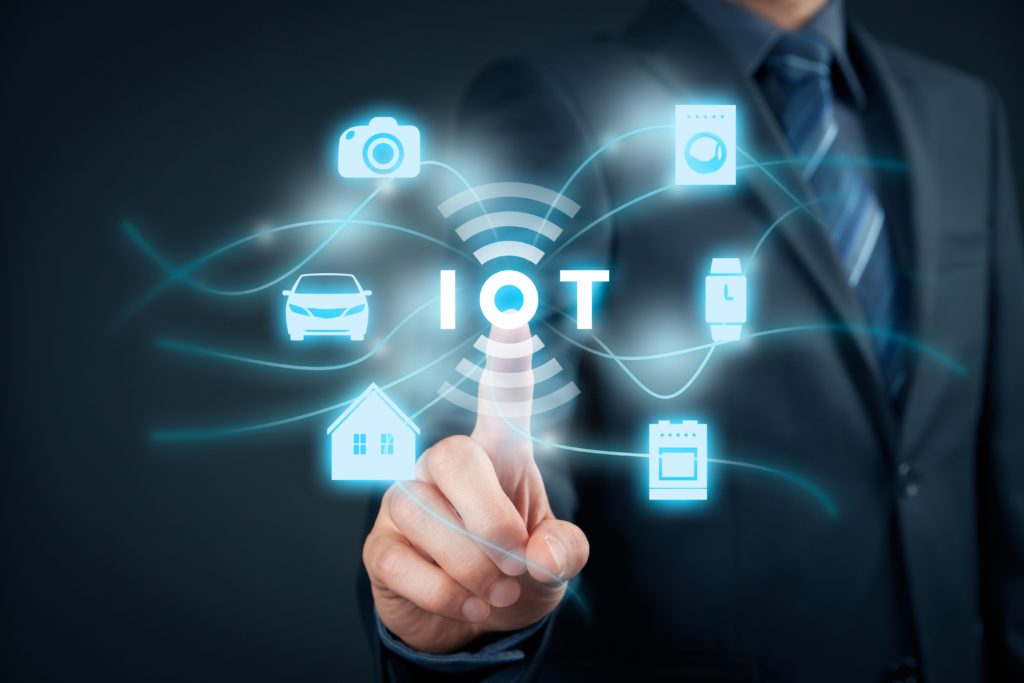 Manufacturing CEOs reckoning with the huge potential of the Internet of Things (IoT) should focus intensely on the business opportunities and challenges the technology can solve or they can easily and needlessly get sidetracked and miss out on the benefits to their companies from the new world of sensors, connectors and digital networks on which IoT is based.
Manufacturing CEOs reckoning with the huge potential of the Internet of Things (IoT) should focus intensely on the business opportunities and challenges the technology can solve or they can easily and needlessly get sidetracked and miss out on the benefits to their companies from the new world of sensors, connectors and digital networks on which IoT is based.
That’s one piece of advice from a fellow CEO who should know: Terrence Curtin, chief of TE Connectivity, a $13-billion global industrial-technology leader that specialize in connector and sensor solutions and is at the center of IoT developments in automotive, aerospace, medical devices and other manufacturing industries.
“What is the business problem you’re trying to solve that you believe will give you a competitive advantage?” by harnessing IoT, Curtin told Chief Executive. “Sometimes it’s over-simplified. The amount of things that can be sensed in the world isn’t the limitation–it’s the integration of everything together, because sensors can sense nearly everything.”
Sensors connected to the internet can enable countless functions, ranging from indicating temperature and humidity levels in a manufacturing process to the position of a package on a conveyor belt, Curtin says. Making that data useful “comes down to passing it back to something that can make intelligence out of it,” says Curtin,
Curtin advises other manufacturing CEOs to consider a handful of “core buckets” in their decision-making about deploying IoT systems.
Put the customer at the center: When considering the data-generation possibilities of IoT and its components, the first core bucket is, “Make sure you focus on how you’re going to help your customers … to make their processes that much more seamless and to your advantage, rather than your competitors’,” Curtin advises.
“It’s a journey, and you have to pick points around how to drive it forward.”
Consider the manufacturing environment: It’ll take decades, Curtin says, for companies to upscale factories and retrofit existing equipment to take full and proper advantage of the capabilities of IoT and the unprecedented volume of information it can generates. “You need to make sure that the manufacturer gets the quality and efficiency of performance that they get from other areas of their lives,” he says. “One of the most important things is not only getting the data off the machines but having the analytics to self-correct. And that’s a journey.”
Design to IoT’s advantages: TE itself faces the challenge involved in the third core bucket, for engineers of designing processes and systems to optimize the data that can be generated by IoT. “There are simulation tools available, but actually getting that engineering data flow that influences manufacturing in real time, versus just sending it over to manufacturing – how do you really get a continuous loop that helps us get the kind of faster cycle speeds that the world is coming to expect day-to-day?” Curtin says. “That’s what every CEO can struggle with.”
Reckon with the labor-force effects: Manufacturing workers can adjust to the capabilities of IoT, but CEOs must “help employees embrace this world,” Curtin says. Factory-floor labor especially may be greatly disrupted, he says, in areas such as miniaturization where human senses and appendages simply aren’t capable of working at the small scale that sensors can. But look for ways to combine the advantages of humans with the capabilities of IoT. “That may be hiring or training more controls engineers who do more with data,” he says. “Or having collaborative robots that don’t do everything themselves but are humans and automation working together.”
Make IoT digestible: “It’s a journey, and you have to pick points around how to drive it forward,” Curtin advises. “You can’t just boil the ocean. Break it down and get it down to the data you want, that’s actionable. That will take a while.”
Read more: U.S. Manufacturers Continue To See Strong Growth In 2018

Chief Executive Group exists to improve the performance of U.S. CEOs, senior executives and public-company directors, helping you grow your companies, build your communities and strengthen society. Learn more at chiefexecutivegroup.com.
0

1:00 - 5:00 pm
Over 70% of Executives Surveyed Agree: Many Strategic Planning Efforts Lack Systematic Approach Tips for Enhancing Your Strategic Planning Process
Executives expressed frustration with their current strategic planning process. Issues include:
Steve Rutan and Denise Harrison have put together an afternoon workshop that will provide the tools you need to address these concerns. They have worked with hundreds of executives to develop a systematic approach that will enable your team to make better decisions during strategic planning. Steve and Denise will walk you through exercises for prioritizing your lists and steps that will reset and reinvigorate your process. This will be a hands-on workshop that will enable you to think about your business as you use the tools that are being presented. If you are ready for a Strategic Planning tune-up, select this workshop in your registration form. The additional fee of $695 will be added to your total.

2:00 - 5:00 pm
Female leaders face the same issues all leaders do, but they often face additional challenges too. In this peer session, we will facilitate a discussion of best practices and how to overcome common barriers to help women leaders be more effective within and outside their organizations.
Limited space available.

10:30 - 5:00 pm
General’s Retreat at Hermitage Golf Course
Sponsored by UBS
General’s Retreat, built in 1986 with architect Gary Roger Baird, has been voted the “Best Golf Course in Nashville” and is a “must play” when visiting the Nashville, Tennessee area. With the beautiful setting along the Cumberland River, golfers of all capabilities will thoroughly enjoy the golf, scenery and hospitality.
The golf outing fee includes transportation to and from the hotel, greens/cart fees, use of practice facilities, and boxed lunch. The bus will leave the hotel at 10:30 am for a noon shotgun start and return to the hotel after the cocktail reception following the completion of the round.